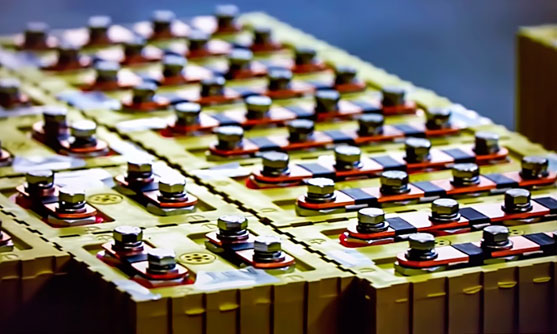Lithium-ion batteries are increasingly being used in high-power applications like electric vehicles. As the demand for them continues to grow, high-power battery manufacturers must be able to ensure their safety and performance through strict quality control measures.
One helpful solution for quality control is the handheld XRF analyzer. Learn about the important role they play throughout the high-power lithium-ion battery supply chain to ensure that compliance testing standards are consistently met at all process steps.
The Future Is Electric: Innovating with High-Power Lithium-Ion Batteries
Thanks to its advantages of high energy, high battery voltage, a wide range of operating temperatures, and long storage life, the lithium-ion battery is widely used in various electronic and electrical equipment. In fact, the global lithium-ion battery market size is estimated to grow to $94.4 billion by 2025.
One of the main drivers of this adoption is the expanding production of electric vehicles globally; the large-capacity lithium-ion battery is expected to serve as one of the main power sources of electric vehicles in the future. Today material suppliers, high-power battery manufacturers, and electric vehicle manufacturers are collaborating extensively on the research and development of lithium-ion batteries with high energy density.
The Risks of High-Power Lithium-Ion Batteries in the Automotive Industry
However, with these innovations comes a critical safety concern: lithium-ion batteries have caused an increasing number of catastrophic incidents, such as fires and explosions. Generally, these accidents are caused by both internal and external factors:
- Internal factors, such as the battery's material composition or production process, may affect battery safety
- External factors refer to the poor conditions under which the battery is used, such as overcharging and squeezing, which may cause the battery to expand, smolder, or even catch fire
A short circuit is the cause of most lithium-ion battery accidents. The internal short circuit refers to the unintended contact between the positive and negative electrodes inside the battery.
This is generally caused by:
- Metal impurities introduced in the production process
- Burrs left from the cutting of electrode metal foils
- Lithium dendrites formed by battery use
- Squeezing and other kinds of unexpected mechanical stress
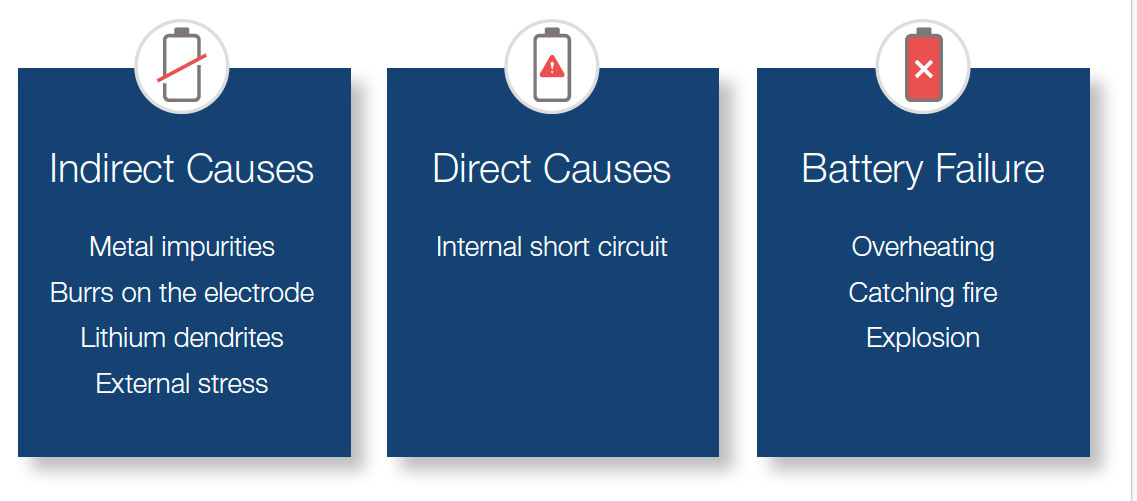
Lithium-ion battery failure is caused by both direct and indirect sources.
The Role of Handheld XRF Analyzers in the Lithium-Ion Battery Supply Chain
Fortunately, handheld XRF analyzers can help to catch issues introduced during the production process. To demonstrate their role in the lithium-ion battery supply chain, let’s look at an example:
Lithium-ion battery manufacturer A purchases several Olympus Vanta™ handheld XRF analyzers to analyze and test key raw materials for batteries and battery contact parts in their production facility.
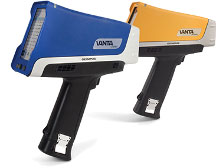
Olympus Vanta handheld XRF analyzers.
According to compliance requirements, the concentration of the metal elements (including iron, silver, cobalt, zinc, copper, nickel, and chromium) in the lithium battery electrode materials are subject to certain limits. These limits are typically 30–50 ppm, because foreign metallic objects (even a very small amount) in lithium battery materials can cause a short circuit when the battery is in use.
As a result, manufacturer A's production facility is strictly required to be free of any metal parts scattered about to prevent metal objects from being mistakenly introduced into the battery electrode materials.
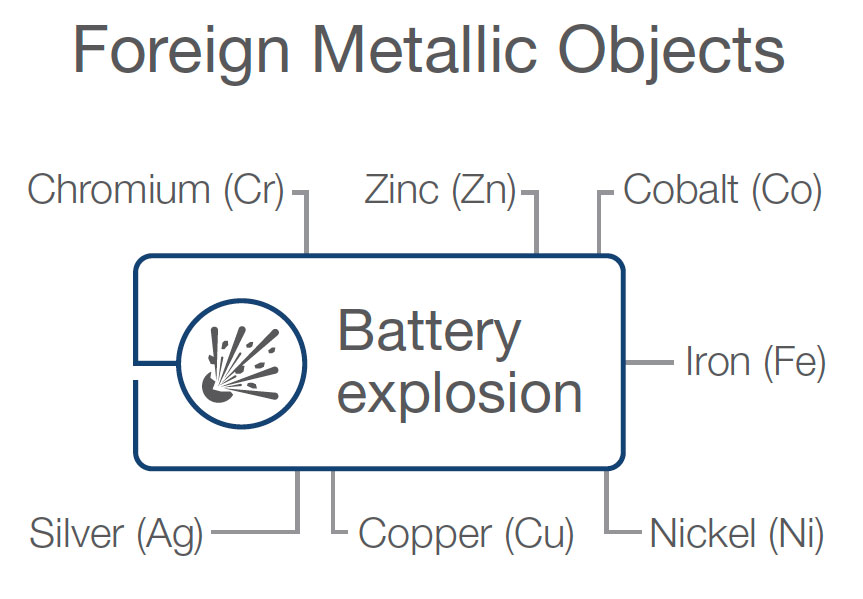
Foreign metal content can cause a lithium-ion battery to explode if it is accidentally introduced during the manufacturing process.
But lithium battery manufacturer A and other manufacturers in this industry aren’t the only businesses that need to measure foreign metal content in materials.
Manufacturer A's raw material suppliers and battery manufacturing equipment suppliers also need to do this work to ensure that the same set of testing standards are followed throughout the entire supply chain (both upstream and downstream). Consequently, manufacturer A's raw material supplier B purchased several handheld XRF analyzers to perform similar quality control work.
Further, equipment supplier C provides manufacturer A with equipment to produce battery materials, so they are also required to perform quality control tests on these components. One example is the impeller blade, as shown below.
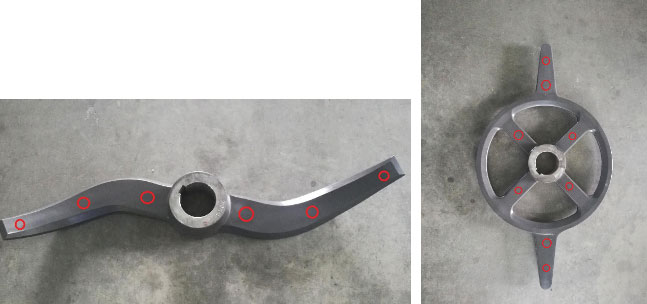
The red circles on the blades indicate the positions where supplier C needs to test. The alloy surface is coated with tungsten carbide. If any metal elements, such as iron or copper, are detected in the test, the tested blade fails to meet the requirements. Experience shows that a tungsten-carbide thickness of at least 50 µm can meet the requirements.
As required by manufacturer A, the surface of all production equipment must be coated with tungsten carbide with a thickness of at least 50 µm to prevent the equipment's alloy from being exposed and to avoid compromising the lithium battery materials' purity.
Supplier C also needs to perform compliance checks on the tungsten carbide purchased and require its tungsten-carbide supplier D to do the same. In addition, the ternary lithium electrode materials commonly used in lithium-ion batteries can be recycled when the batteries reach end of life. Using a handheld XRF analyzer to test and classify waste batteries is also a good practice for recyclers.
As the following flow chart shows, our handheld XRF analyzers can be very helpful at all steps of the lithium-ion battery supply chain.
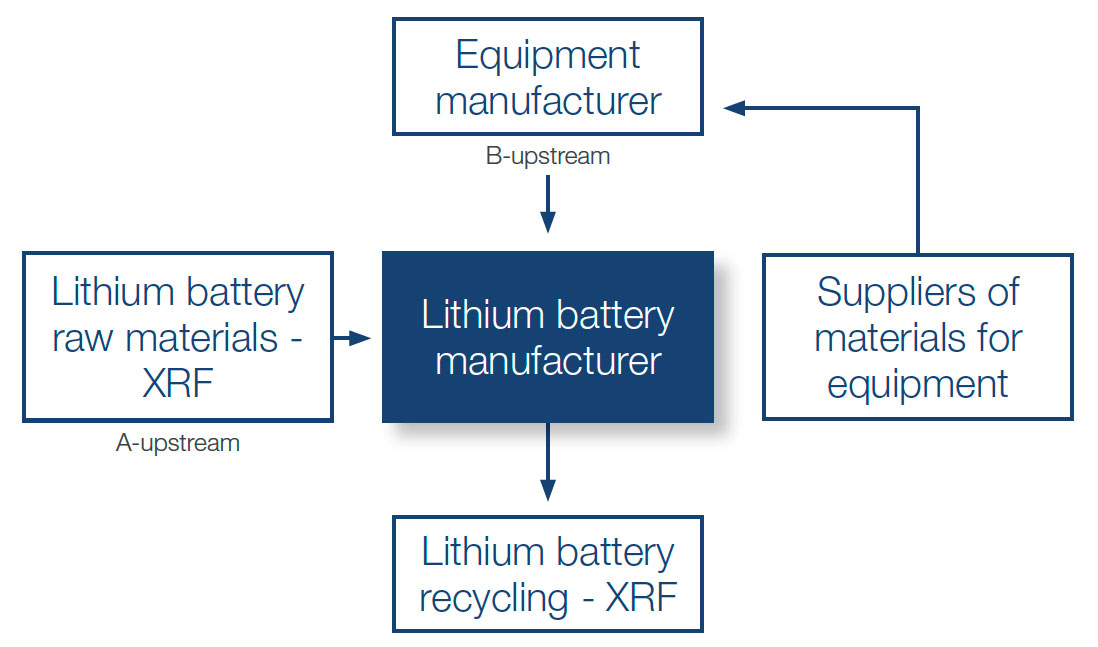
Handheld XRF analyzers can benefit all parts of the lithium-ion battery supply chain.
Related Content
9 Quick Tips for End-to-End Manufacturing Quality Control
Brochure: Vanta XRF Analyzers for Manufacturing
Did You Know: Portable XRF is Used to Help Ensure the Safety of Automobiles
